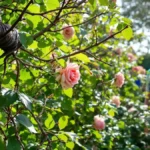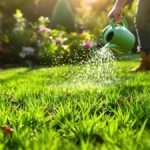The yellowing of orchid leaves is often a sign of inadequate maintenance. The causes are varied, ranging from excess or insufficient watering to nutrient deficiencies , not to mention the lack of lightand variations in temperature . This phenomenon can lead to harmful consequences, such as root rotor dehydration, thus compromising the health of the plant. Special attention is therefore necessary to preserve their beauty. Essential to know The
yellowing of orchid leaves
- is often a sign of inadequate care. The causes include excess
- or insufficient watering , and a nutrient deficiency. Arepotting
- is recommended if the orchid shows serious signs of deterioration. Preventing problems requires moderate watering
- and adequate light exposure. Yellowing of Orchid Leaves: A Result of Inadequate Care The
yellowing of orchid leaves is often a symptom of inadequate
maintenance. For gardening enthusiasts and plant enthusiasts, it is crucial to recognize the signs that this magnificent plant emits. This phenomenon can be the result of several factors related to the care given to the orchid. Common causes of yellowing The most common causes of yellowing leaves include excessor
underwatering
, a lack of nutrients , a lack of lightand temperature variations. Each of these causes can seriously affect the health of the plant. A balance is therefore necessary to ensure its vitality. Excess water and its consequences An excess water, as well as a lack, can lead to serious problems. Overfeeding in a fluid often leads to
root rot
, which impairs the malabsorptionof nutrients, causing discoloration of the leaves. This can also endanger the life of the orchid itself if nothing is done. The risks of poor irrigationOn the contrary, poor water can lead to dehydration of the plant, directly leading to yellowing of the leaves. The roots, deprived of water, can no longer function properly, which affects the entire organism of the plant. Essential nutrients for health
Essential nutrients are crucial for the good development of orchids. Among these, we find
nitrogen , magnesium
,
phosphorus andpotassium , without forgetting themicroelements necessary for optimal growth. A deficiency in one of these elements can lead to a malfunction of the plant’s metabolism, exacerbating the yellowing of the leaves. Light needs of orchids Orchids need adequateindirect light , which serves as an energy source for photosynthesis. A lack of light can slow down this important vital function, contributing to the yellowing of the leaves. It is therefore essential to position the plant well to provide it with the necessary lighting. Importance of stable temperatures
Stable temperatures , between 18°C and 25°C
, are essential for ensuring the well-being of the orchid. Fluctuations in temperature can create unnecessary stress that affects the health of the plant and can lead to yellowing of the leaves.
Natural aging of leaves It is important to note that yellowing of the leaves can also be part of anatural aging process . The leaves at the base often turn yellow and fall off when the orchid reaches maturity. This is part of the normal life cycle of the plant and should not always be a cause for concern.Preventing yellowing
Speed up harvest and sweeten your rhubarb with this little-known but ultra-effective technique
To prevent these problems, moderate watering,
specific fertilization , good light exposure and thermal stability are recommended. Careful monitoring of these criteria will ensure that your plant remains healthy and flourishing.Repotting and additional care
If the orchid is severely affected, a
repotting may be necessary. This includes renewing the substrate and cleaning the container. It is also advisable to remove dead leaves to encourage new growth, thus ensuring better long-term health of the orchid.
















